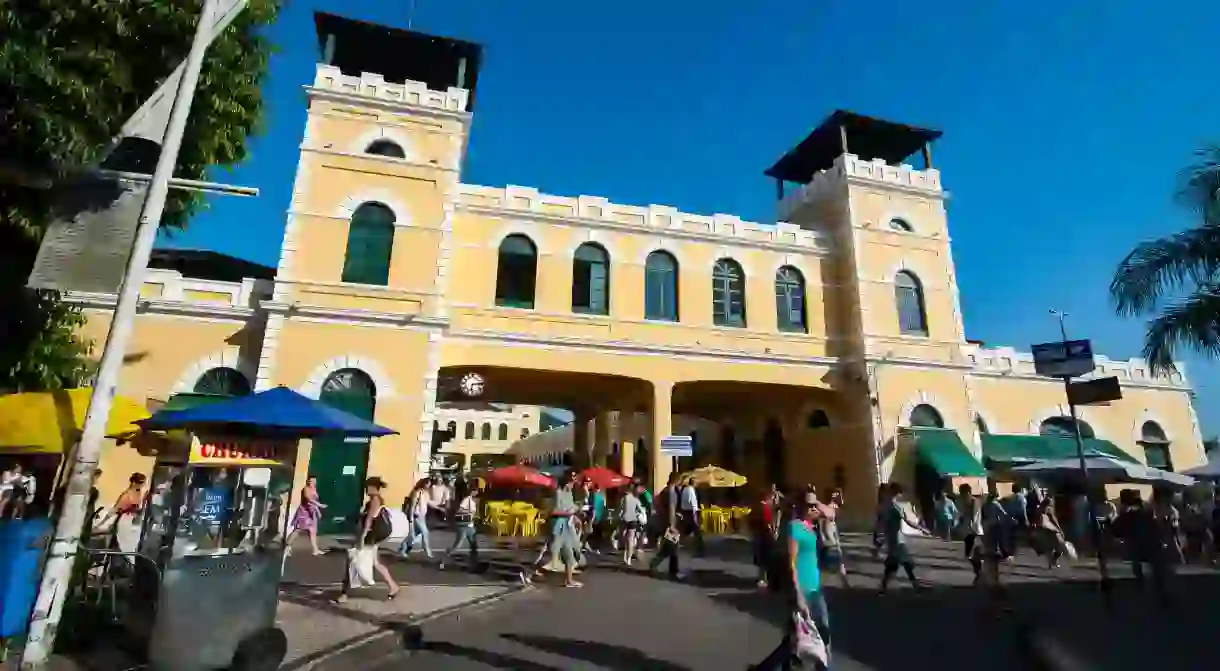The Top Things to See and Do in Florianópolis, Brazil

Welcome to the capital of Brazil’s Santa Catarina state: the city of Florianópolis, often shortened to Floripa. A 90-minute flight south of Rio, it’s a winner for a weekend – or longer. While it’s got one foot on the mainland, the other is on a connected island – also called Santa Catarina – with plenty of small outcrops adjacent. Here you’ll find tons of fun in the form of sun-baked beaches, snorkeling, excellent seafood and romantic sunset wanders.
Learn to surf at Praia Mole
Natural Feature

The Atlantic beaches of Santa Catarina Island aren’t merely beautiful. The long, broad stretches of golden sand framed by rocky capes are known for some of Brazil’s best surfing – and with so many beaches, conditions suit all, from absolute beginner to expert. Praia Mole, a small bay in the center of the island hosts championship tournaments and has two-point breaks and a beach break. Floripa Surf Club, based at the beach, rents boards and has classes.
Scoff seafood
Restaurant, Seafood
Squeezed between Galheta mountain, a seemingly endless golden beach and shimmering Santa Catarina lagoon, Barra da Lagoa is a low-key fishing village with some damn fine views over the forested hills behind the beach. Everyone knows it as the go-to for an evening drink or meal – keep your eyes peeled for menus doing freshly caught robalo (bass) or badejo (sea bream) – ideally served with salad and a side order of sunset view. For a failsafe, there’s Rancho de Canoa, where the tapas-like petiscos are delicious and plentiful.
Lie back on Lagoinha da Leste Beach
Natural Feature
Florianopolis’s wildest shore, this strand of soft sand is framed by imposing mountains coated in a subtropical forest. It’s a trek to get here – literally. The only way in is over the mountains on a steep jungle trail running from Praia do Matadeiro beach, immediately to the north. It’s a sweaty, hour-long walk and as there are no facilities at Lagoinha do Leste, you’ll need to bring your own water. But you’ll be so thrilled you came.
Slurp sunset cocktails
Bar, Pub, Nightclub, Brazilian, Pub Grub
Paraglide at Lagoa De Conceicao
Natural Feature
At the heart of Santa Catarina island, the main attraction is a series of salt-water lakes. With almost no waves, they’re the business for wind- and kite-surfing and the surrounding mountains have a series of launch ramps for paragliding. A flight over the beaches and rainforests, dropping low over the lagoons, is spectacular, with a handful of local clubs offering tandem flights suitable for all ages, as well as classes leading to full paraglide certification.
Hike Trilha do Morro das Aranhas
Natural Feature

It’s not the arachnids you need to worry about on the trail up Spider Mountain. Despite the name, there are precious few. The challenge is the precipitous path, which rises over this rocky headland in the island’s south, hugging a steep cliff face that falls into a pounding ocean. In places, you need to clamber over boulders and there’s little shade. But the views are magnificent: over the forest and bottle-green ocean to the ragged Spider-Island archipelago just offshore.
Public Market
Market, Brazilian
Fortaleza de Santo Antônio de Ratones
Historical Landmark
Santa Catarina History Museum
Museum

The city isn’t short on places brimming with treasures – but if you only have time for one, our top tip is the Santa Catarina History Museum (MHSC), in the Palace Cruz e Souza. The building alone is a major event, with its balustrading in homage to Florence and its ice-cream-pink facade. Step in and you’ll be swept up by the contents: a floor displayed to its best advantage, revealing intricate 19th-century marquetry; dreamy paintings of Desterro, the original town; even the first domestic light bulb used in Florianopolis, in 1910. You’ll be wowed.
Cathedral Metropolitana
Building, Cathedral, Church
This article was originally written by Ricarda Reininger and has since been updated.













